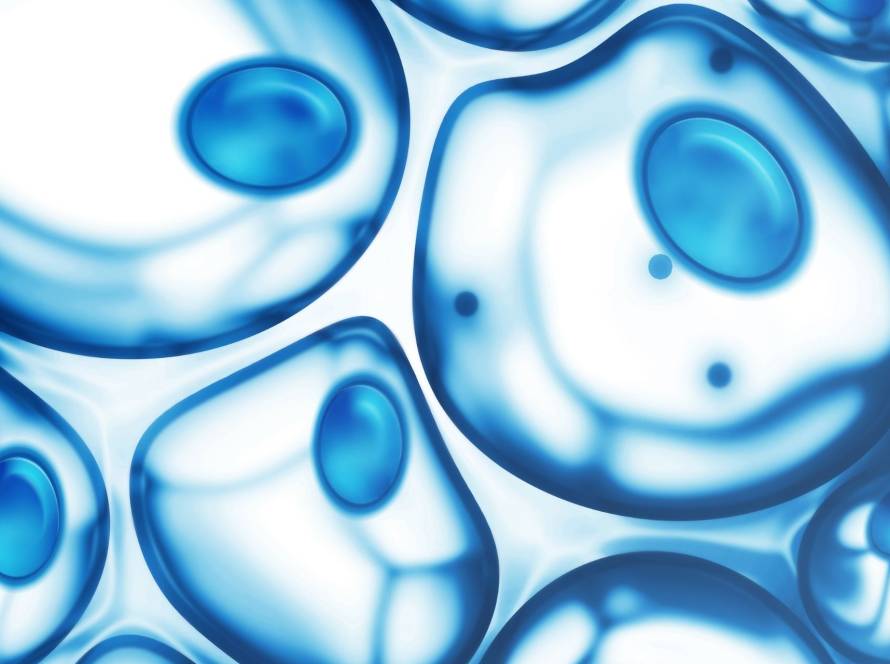Our bodies start losing muscle mass at age 30. Many people don’t realize how deeply this natural process affects their health and energy needs.
This detailed piece breaks down the science behind age related metabolic changes and how does basal metabolic rate change with age. We’ll look at the biological mechanisms behind these changes. We’ll also learn proven ways to keep our metabolism healthy as we age.
How aging affects our basal metabolic rate?
Basal metabolic rate (BMR) gradually decreases with age, starting as early as our 20s or 30s and becoming more noticeable after 40. This decline is largely due to a natural loss of muscle mass, known as sarcopenia, as well as hormonal changes that affect how efficiently the body burns energy.
Aging is also associated with reduced physical activity and slower cellular metabolism, which further contribute to a lower BMR. As a result, older adults typically burn fewer calories at rest compared to when they were younger, making it important to adjust lifestyle habits to maintain metabolic health.
Understanding basal metabolic rate fundamentals
BMR shows how much energy our body needs to keep working while at rest. Our body uses this energy, which makes up 60-70% of total energy expenditure, to perform its basic functions.
The components of daily energy expenditure
Total Energy Expenditure (TEE) breaks down into three main parts. Resting Energy Expenditure (REE) or BMR comes first and uses the most energy. Our body needs this energy to breathe, pump blood and keep cells healthy. The second part, Thermic Effect of Food (TEF) or Diet Induced Thermogenesis (DIT), takes about 10% of TEE. Our body uses this energy to digest food and store nutrients. Activity-Induced Energy Expenditure (AEE) rounds out the three components. This includes both planned workouts and everyday movements like walking or fidgeting.
The Physical Activity Level (PAL) sits around 1.80 for most body mass index groups, all but one of these categories at the highest end. Our weight can change over time with just a tiny 2% difference between daily energy intake and output.
How BMR is measured accurately
Scientists need controlled lab conditions to measure BMR precisely. Direct calorimetry gives the most accurate results by measuring heat production in a special chamber called a calorimeter. This method stays mostly in research labs because it costs too much and proves too complex.
Indirect calorimetry offers a more available clinical option. It uses metabolic carts to calculate oxygen consumption (VO2) and carbon dioxide production (VCO2) while we rest after fasting. Scientists plug these numbers into formulas like the Weir equation to figure out 24-hour REE.
Scientists created several prediction equations to estimate BMR without special equipment. The Harris-Benedict equation from 1919 sees widespread use. The Mifflin-St Jeor equation has become more accurate for today’s population. Here’s how it works:
- For males: (10 × weight in kg) + (6.25 × height in cm) – (5 × age in years) + 5
- For females: (10 × weight in kg) + (6.25 × height in cm) – (5 × age in years) – 161
Factors influencing resting energy needs
Our body composition determines BMR more than anything else. Fat free mass (FFM), especially muscle tissue, needs lots of energy to maintain itself, so it best predicts BMR. Our body size matters too, bigger bodies need more energy to keep running.
Men’s and women’s BMR differs mainly because of body composition. Men tend to have higher BMR because they carry more muscle. Age changes things too. REE grows faster in babies until 15 months old. Then it slowly drops until age 20 and stays steady until about age 60.
Our environment affects BMR too. Our body works harder in very hot or cold temperatures to stay at normal temperature through shivering or sweating. Hormones, especially thyroid function, can substantially change our metabolic rate. An overactive thyroid speeds up BMR while an underactive one slows it down.
Some conditions can lift our BMR temporarily. These include getting sick, hurting ourself, being pregnant or breastfeeding. Even everyday stimulants like coffee and cigarettes can raise our basic energy needs.
The trajectory of metabolic change throughout life
Research has changed our understanding of how metabolism changes with age. We used to think it declined after 30, but science shows a different pattern. The way our metabolism changes throughout life challenges what we believed about timing of these changes.
Early adulthood (20s-30s): peak metabolic function
Our metabolism surges during infancy, then slows down about each year until we reach 20, where it levels off. The metabolic rate stays steady through our twenties and thirties. Researchers discovered that energy use, adjusted for body size and composition, remains stable from ages 20 to 60. This creates a metabolic plateau instead of the expected decline. In spite of that, our bodies start losing muscle mass at 3-8% every decade after 30, according to recent studies. This muscle loss sets up future metabolic changes even as overall energy use stays steady.
Middle age (40s-50s): the beginning of decline
People often blame middle age for slowing metabolism and weight gain. Both men and women gain about 0.3-0.5 kg each year between 40-66. Body fat increases about 1% yearly starting in our forties. Scientists found that people go through rapid biomolecular changes around 44. These changes affect lipid metabolism, cardiovascular markers, skin and muscle function. Such physical shifts create metabolic vulnerabilities even when overall energy use remains stable.
Later life (60+): significant metabolic shifts
The body’s metabolism changes substantially after 60. People also experience a wave of dramatic biomolecular changes around 60. These changes affect carbohydrate metabolism, immune regulation and heart function. We see these changes among other effects like progressive muscle loss. An 80-year-old has about 30% less muscle than a 20 year old. Fat distribution changes dramatically too. Older women develop 300% more visceral fat than young women, while older men have twice the visceral fat of younger men, according to studies. This body composition shift makes metabolism even less efficient than aging alone would cause.
Cellular and physiological mechanisms of age related BMR decline
Our body’s basal metabolic rate naturally slows down as we age. This happens because of connected biological changes that affect our cells, tissues and entire body. Learning about these changes helps us understand why we need different amounts of energy as we get older.
Sarcopenia: the progressive loss of muscle tissue
Muscle mass largely determines our basal metabolic rate. Men’s skeletal muscle makes up approximately 53% of lean tissue, while women have about 47%. Research shows people lose about 0.7% to 0.8% of their muscle mass each year by age 60. This muscle loss, called sarcopenia, mainly affects type II (fast-twitch) muscle fibers. These fibers burn a lot of energy even when we’re resting.
Endocrine system changes affecting metabolism
Our aging endocrine system slows down metabolism because it makes less hormones and our tissues become less sensitive to them. Men’s testosterone levels start dropping in their 20s or 30s. Lower testosterone leads to muscle shrinkage, fewer muscle ribosomes and less protein production.
Growth hormone (GH) levels also fall with age, which reduces insulin like growth factor 1 (IGF-1) in our blood. This change affects how well we maintain muscle mass.
Other key hormonal changes include:
- Women produce less estrogen, especially after menopause;
- Melatonin levels drop and affect sleep patterns;
- Cortisol patterns change with higher evening levels and become more irregular.
Cellular senescence and metabolic consequences
Our cells age faster as senescent cells build up. These cells stay metabolically active but stop dividing and show unique metabolic patterns. They suffer from increased oxidative stress, protein processing problems and mitochondrial issues. All these changes reduce how efficiently our metabolism works.
Senescent cells release inflammatory substances known as the senescence-associated secretory phenotype (SASP). SASP causes inflammation throughout our body and disrupts normal metabolism. These aging cells change important metabolic pathways. They increase activity in the tricarboxylic acid cycle and pentose phosphate pathway but decrease fatty acid pathways.
These cellular and body wide changes lead to a steady drop in basal metabolic rate. This affects our energy balance, body composition and overall metabolic health as we age.
Evidence based strategies to support metabolic health
Our metabolic health becomes more vital as aging naturally affects our basal metabolic rate. Scientists have found several proven ways to fight age-related metabolic decline.
Resistance training for preserving muscle mass
Regular resistance training is our best defense to preserve metabolic rate as we age. Adults who don’t exercise lose about 3-8% muscle mass per decade, which directly lowers their metabolic rate, according to studies. Ten weeks of resistance training can add 1.4 kg of lean muscle mass. This boosts resting metabolic rate by about 7% and cuts fat weight by 1.8 kg.
Resistance training does more than just preserve muscle. It helps our body process glucose better. Research shows it cuts down visceral fat, lowers HbA1c, increases glucose transporter density and makes our body more sensitive to insulin. We should do strength training at least twice a week and work all our major muscle groups to get the best results.
Nutritional approaches to maintain BMR
Protein plays a vital role in keeping our metabolism healthy as we age. Our body uses more energy to digest protein than carbs and fats, creating a higher thermic effect. Eating enough protein while doing resistance training is the best way to support our metabolic rate.
We need to eat the right amount of calories too. Long term calorie restriction can lower our BMR by a lot. Extreme diets often backfire and hurt our metabolism by triggering our body’s defense mechanisms.
Supplements with potential metabolic benefits
While many products claim to rev up metabolism, only a few have real scientific backing. Green tea extract has compounds called catechins that might help support metabolism and weight control. B vitamins help turn food into energy our body can use. Our iron levels matter too, low iron can mess with our metabolism even when we exercise.
Sleep and stress management for metabolic health
Poor sleep wreaks havoc on our metabolism in many ways. Regularly sleeping less than 7 hours per night changes our hunger hormones. It makes us crave food more and leads to a higher obesity rate in adults. On top of that, it can make our body resist insulin, a key factor in metabolic problems.
High stress levels throw our metabolism off balance by keeping cortisol levels high. This hormone imbalance leads to insulin resistance and belly fat buildup. It can set us up for metabolic diseases like heart problems and type 2 diabetes. Using good stress management techniques helps keep our metabolism healthy in the long run.
The connection between metabolism and longevity isn’t as simple as we once thought. We used to believe that a lower metabolism led to a longer life. Recent studies suggest that keeping our metabolism healthy through specific actions might work better than trying to artificially lower it.
We can support our body’s metabolism as we age by consistently following proven strategies. These include regular strength training, timing our meals right and trying new metabolic therapies that science has discovered.


